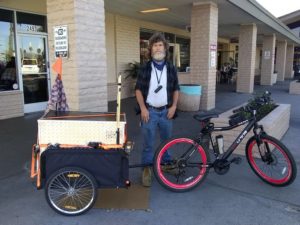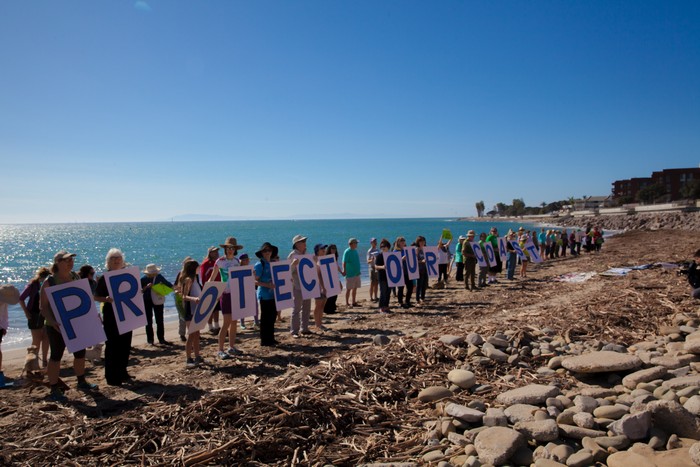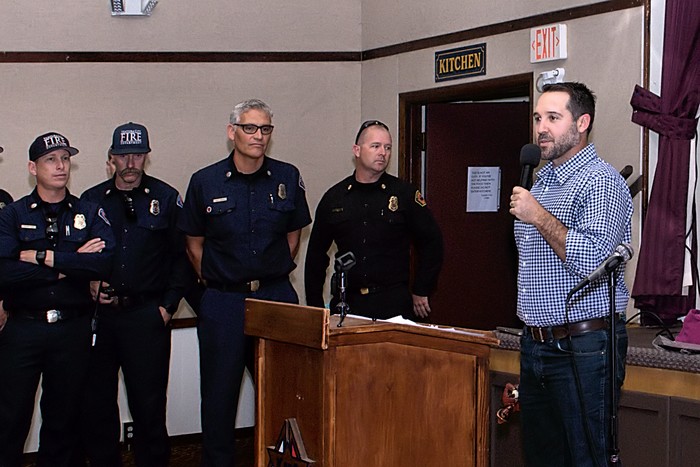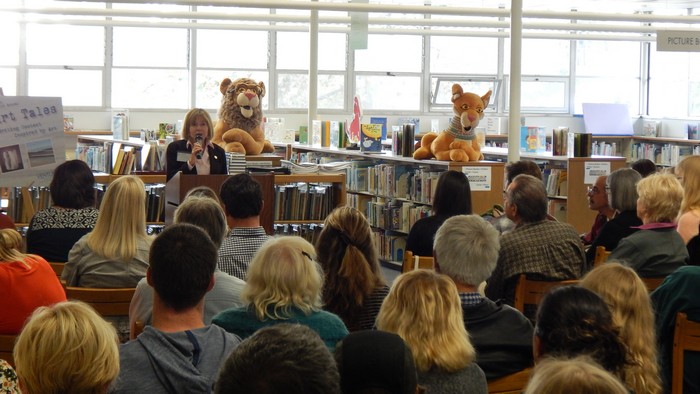by Burris DeBenning
Disasters are a curve ball for governments, and the Thomas Fire was no exception for the City of Ventura. Plans set before the emergency get shelved and funds must be rearranged to meet immediate expenses until federal relief arrives. Still growing, the cost of the Thomas Fire is estimated to be $60 million. One fire official said that $40 million is for debris removal alone. Without a guarantee, City officials hope the State and FEMA will reimburse the City for $55 million, leaving $5 million for the City to come up with. Interim City Manager Dan Paranick said, “we won’t know for a while about the reimbursement; it’s a risk.” A huge part of this cost is the water used during the fire.
Frustrated by the City’s water department after the fire, residents voiced their concerns at a special City Council meeting on January 30 to address how residents might be credited for the month following the fire. The City charged one citizen who lost her home $946 for the time she was relocated, and she only paid $82 in the previous month. The City credited her partially, but left the remainder, over $350, for her to pay. A major contention was the massive water use by neighbors who prevented each other’s homes from burning. A resident who installed a rooftop sprinkler system said the water pressure in his area disappeared leaving residents and firefighters with no options. He likened the City’s water infrastructure and billing to “a monopoly with no competition that has overly complicated rate structures and a broken emergency water system.” Others told Council not to charge residents in evacuation zones for wastewater that was dedicated to preserving homes, not just wanton excesses flowing into the storm drains. Even Councilmember Erik Nasarenko asked staff, “why is it so complicated?”
Kevin Brown, the Water Department General Manager, responded that he did several reviews of other water agencies, including the one he formerly worked for, and found that rate structures across the board are like the City’s. The challenges for the City are determining who should get relief and how to do this without incurring legal troubles. In a presentation before Council, Brown elucidated the City’s existing water-wastewater rate structure, which is based on tiers of usage. The higher the tier, of which there are four, the more water use. When the fire hit and neighborhood spigots were all on simultaneously, residents normally in tiers 1 or 2 shot up to the higher tiers 3 and 4 for the period after December 4. Another mathematical nuance in the formula is that the City also determines a monthly bill based on the two-year average of daily use.
Since 2014, the Water Department has offered a relief program for situations like slow leaks and major plumbing ruptures. Every five years, residents may apply for a one-time relief claim that credits back the difference between the overage and the two-year average. But if a resident already applied for a relief claim within five years of the fire, technically, by policy, they could not claim the fire for another relief credit. Also, the fire credit would be for some residents the one-time relief, meaning that if there was another exigency within five years, they could not receive the rate reduction. Brown solved this dilemma by proposing to waive the fire as a one-time claim, so residents would be entitled to relief from the fire and another incident occurring within five years.
Red tagged homes, Brown said, had their water bills stopped on the day of the fire, so they should not have been charged for time not occupying the residence. To ease temporary relocation costs, Brown proposed that Council should waive the $52 meter activation fee customarily charged when someone occupies a new residence, such as an apartment or home rental. Council also recommended that staff study the possibility of waiving the $52 fee when residents return to their newly built homes.
Another matter was neighbors who helped other neighbors fight the fire but did not lose or suffer damage to their own homes. Several residents told Council they used an excessive amount of water to tackle spot fires and catch embers at nearby houses and yards. Councilmember Cheryl Heitmann commented that “they were clearly trying to save other homes and property.” “Those should be reviewed on a case by case basis,” Brown said, “and any resident who feels their bill was unfair should fill out an application for relief.” Brown added “what typically happens is the resident will be credited the difference between the short-term high tier use and the two-year average normally billed at the lower tiers.”
Recouping the revenue lost due to these credits is a legal tightrope. Assistant City Attorney Miles Hogan, advising Brown and his staff that night, told Council that money to back-fill the losses, by law, could not come from rate increases or changes because that would make some customers’ bills look like subsidies. To keep everything equal, Hogan said, funds would have to come from non-rate sources, such as Water’s Care Program or even the General Fund. Furthermore, Water’s refund and loss coverage program must comply with California Proposition 218, the law requiring any rate changes or assessments to be approved by the local voters. City Finance and Technology Director Gilbert Garcia said that the City can file a claim with FEMA but that in his experience and discussions with the State and the City of Santa Rosa, which underwent a fire storm last fall, such reimbursements for high water use are rare.
By a vote of 6-0, Councilmember Nasarenko’s motion to waive the $52 meter initiation cost for relocating residents and approve the Water Department’s scheme to credit fire zone residents was passed. Per City Attorney Greg Diaz’s advice, Council focused the relief only on the mandatory evacuation areas of the three fire zones running from the Avenue to Clearpoint. Staff will return at a later date to address possibly waiving the $52 start fee for rebuilt residences.







